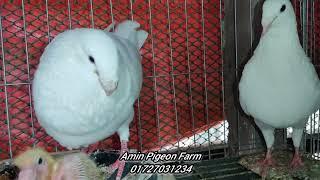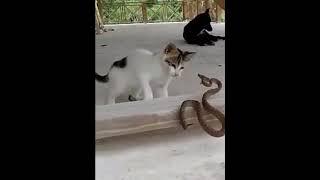Rose-ringed parakeet(Psittacula krameri),also known as ring-necked parakeet(more commonly known as Indian ringneck parrot),is a medium-sized parrot in genus Psittacula,of family Psittacidae.It has disjunct native ranges in Africa & Indian Subcontinent & is now introduced into many other parts of world where feral populations have established themselves & are bred for exotic pet trade.
One of few parrot species that have successfully adapted to living in disturbed habitats,it has withstood onslaught of urbanisation & deforestation.As a popular pet species,escaped birds have colonised a number of cities around world,including populations in Northern & Western Europe.These parakeets have also proven themselves capable of living in a variety of climates outside their native range & are able to survive low winter temperatures in Northern Europe.Species is listed as least concern by International Union for Conservation of Nature(IUCN)because its population appears to be increasing,but its popularity as a pet & unpopularity with farmers have reduced its numbers in some parts of its native range
This is sexually dimorphic.Adult male sports a red & black neck ring & hen & immature birds of both sexes either show no neck rings or display shadow-like pale to dark grey neck rings.Both sexes have a distinctive green colour in wild & captive bred ringnecks have multiple colour mutations which include turquoise,cinnamon,olive,white,blue,violet,grey & yellow.Rose-ringed parakeets measure on average 40cm(16")in length,including tail feathers,a large portion of their total length.heir average single-wing length is about 15 to 17.5cm(5.9 to 6.9").In wild,this is a noisy species with an unmistakable squawking call.Captive individuals can be taught to speak.They are a herbivorous & non-migratory species..
*Scientific classification.
Kingdom:Animalia
Phylum:Chordata
Class:Aves
Order:Psittaciformes
Family:Psittaculidae
Genus:Psittacula
Species:P.krameri
*Binomial name.
Psittacula krameri
(Scopoli,1769)
*Taxonomy.
Four subspecies are recognised,though they differ little:
•African subspecies:
African rose-ringed parakeet(P.k.krameri)western Africa in Guinea,Senegal & southern Mauritania,east to western Uganda & southern Sudan,north to Egypt.Resident along Nile valley & certainly Giza it is sometimes seen on north coast & in Sinai.African parakeet also started to breed in Israel & Jordan in 1980s & is considered an invasive species.
Abyssinian rose-ringed parakeet(P.k.parvirostris):northwest Somalia,west across northern Ethiopia to Sennar state,Sudan
•Asian subspecies:
Indian rose-ringed parakeet(P. k.manillensis)originates from southern Indian subcontinent & has feral & naturalised populations worldwide.In Australia,Great Britain(mainly around London),United States & other western countries,it is often referred to as Indian ringneck parrot.Boreal rose-ringed parakeet(P.k.borealis)is distributed in Bangladesh,Pakistan,northern India & Nepal to central Burma;introduced populations are found worldwide.
Indian subspecies are both larger than African subspecies.
Genus name Psittacula is a diminutive of Latin psittacus,"parrot"& specific krameri commemorates Austrian naturalist Wilhelm Heinrich Kramer.
In 2019,a genetic study revived genus Alexandrinus,formerly viewed as a synonym of current genus Psittacula.Some organisations,including IUCN,have accepted new taxonomy.
*Distribution.
Since 19th century,rose-ringed parakeet has successfully colonised many other countries.It breeds further north than any other parrot species.It has established itself on a large scale in Germany,France,Belgium,Netherlands,Italy & especially UK.See Feral Birds section below.
*Ecology & behaviour.
•Diet.
In wild,rose-ringed parakeets usually feed on buds fruits,vegetables,nuts,berries & seeds.Wild flocks also fly several miles to forage in farmlands & orchards,causing extensive damage.Feral parakeets will regularly visit gardens & other locations near human habitation,taking food from bird feeders.
In India,they feed on cereal grains & during winter also on pigeon peas.In Egypt during the spring,they feed on mulberry & in summer they feed on dates & nest inside palm trees & eat from sunflower & corn fields.
In captivity,rose-ringed parakeets will take a large variety of food & can be fed on a number of fruits,vegetables,pellets,seeds & even small amounts of cooked meat for protein.Oils,salts,chocolate,alcohol & other preservatives should be avoided.
*Reproduction.
In north-west India,Indian rose-ringed parakeets form pairs from September to December.They don't have life mates & often breed with another partner during following breeding season.During this cold season,they select & defend nest sites,thus avoiding competition for sites with other birds.Feeding on winter pea crops provides female with nutrients necessary for egg production.From April to June,they care for their young.Fledglings are ready to leave nest before monsoon.
Wikipedia.
One of few parrot species that have successfully adapted to living in disturbed habitats,it has withstood onslaught of urbanisation & deforestation.As a popular pet species,escaped birds have colonised a number of cities around world,including populations in Northern & Western Europe.These parakeets have also proven themselves capable of living in a variety of climates outside their native range & are able to survive low winter temperatures in Northern Europe.Species is listed as least concern by International Union for Conservation of Nature(IUCN)because its population appears to be increasing,but its popularity as a pet & unpopularity with farmers have reduced its numbers in some parts of its native range
This is sexually dimorphic.Adult male sports a red & black neck ring & hen & immature birds of both sexes either show no neck rings or display shadow-like pale to dark grey neck rings.Both sexes have a distinctive green colour in wild & captive bred ringnecks have multiple colour mutations which include turquoise,cinnamon,olive,white,blue,violet,grey & yellow.Rose-ringed parakeets measure on average 40cm(16")in length,including tail feathers,a large portion of their total length.heir average single-wing length is about 15 to 17.5cm(5.9 to 6.9").In wild,this is a noisy species with an unmistakable squawking call.Captive individuals can be taught to speak.They are a herbivorous & non-migratory species..
*Scientific classification.
Kingdom:Animalia
Phylum:Chordata
Class:Aves
Order:Psittaciformes
Family:Psittaculidae
Genus:Psittacula
Species:P.krameri
*Binomial name.
Psittacula krameri
(Scopoli,1769)
*Taxonomy.
Four subspecies are recognised,though they differ little:
•African subspecies:
African rose-ringed parakeet(P.k.krameri)western Africa in Guinea,Senegal & southern Mauritania,east to western Uganda & southern Sudan,north to Egypt.Resident along Nile valley & certainly Giza it is sometimes seen on north coast & in Sinai.African parakeet also started to breed in Israel & Jordan in 1980s & is considered an invasive species.
Abyssinian rose-ringed parakeet(P.k.parvirostris):northwest Somalia,west across northern Ethiopia to Sennar state,Sudan
•Asian subspecies:
Indian rose-ringed parakeet(P. k.manillensis)originates from southern Indian subcontinent & has feral & naturalised populations worldwide.In Australia,Great Britain(mainly around London),United States & other western countries,it is often referred to as Indian ringneck parrot.Boreal rose-ringed parakeet(P.k.borealis)is distributed in Bangladesh,Pakistan,northern India & Nepal to central Burma;introduced populations are found worldwide.
Indian subspecies are both larger than African subspecies.
Genus name Psittacula is a diminutive of Latin psittacus,"parrot"& specific krameri commemorates Austrian naturalist Wilhelm Heinrich Kramer.
In 2019,a genetic study revived genus Alexandrinus,formerly viewed as a synonym of current genus Psittacula.Some organisations,including IUCN,have accepted new taxonomy.
*Distribution.
Since 19th century,rose-ringed parakeet has successfully colonised many other countries.It breeds further north than any other parrot species.It has established itself on a large scale in Germany,France,Belgium,Netherlands,Italy & especially UK.See Feral Birds section below.
*Ecology & behaviour.
•Diet.
In wild,rose-ringed parakeets usually feed on buds fruits,vegetables,nuts,berries & seeds.Wild flocks also fly several miles to forage in farmlands & orchards,causing extensive damage.Feral parakeets will regularly visit gardens & other locations near human habitation,taking food from bird feeders.
In India,they feed on cereal grains & during winter also on pigeon peas.In Egypt during the spring,they feed on mulberry & in summer they feed on dates & nest inside palm trees & eat from sunflower & corn fields.
In captivity,rose-ringed parakeets will take a large variety of food & can be fed on a number of fruits,vegetables,pellets,seeds & even small amounts of cooked meat for protein.Oils,salts,chocolate,alcohol & other preservatives should be avoided.
*Reproduction.
In north-west India,Indian rose-ringed parakeets form pairs from September to December.They don't have life mates & often breed with another partner during following breeding season.During this cold season,they select & defend nest sites,thus avoiding competition for sites with other birds.Feeding on winter pea crops provides female with nutrients necessary for egg production.From April to June,they care for their young.Fledglings are ready to leave nest before monsoon.
Wikipedia.
- Catégories
- Chats de Race Abyssin
- Mots-clés
- animals, sounds, birds















Commentaires